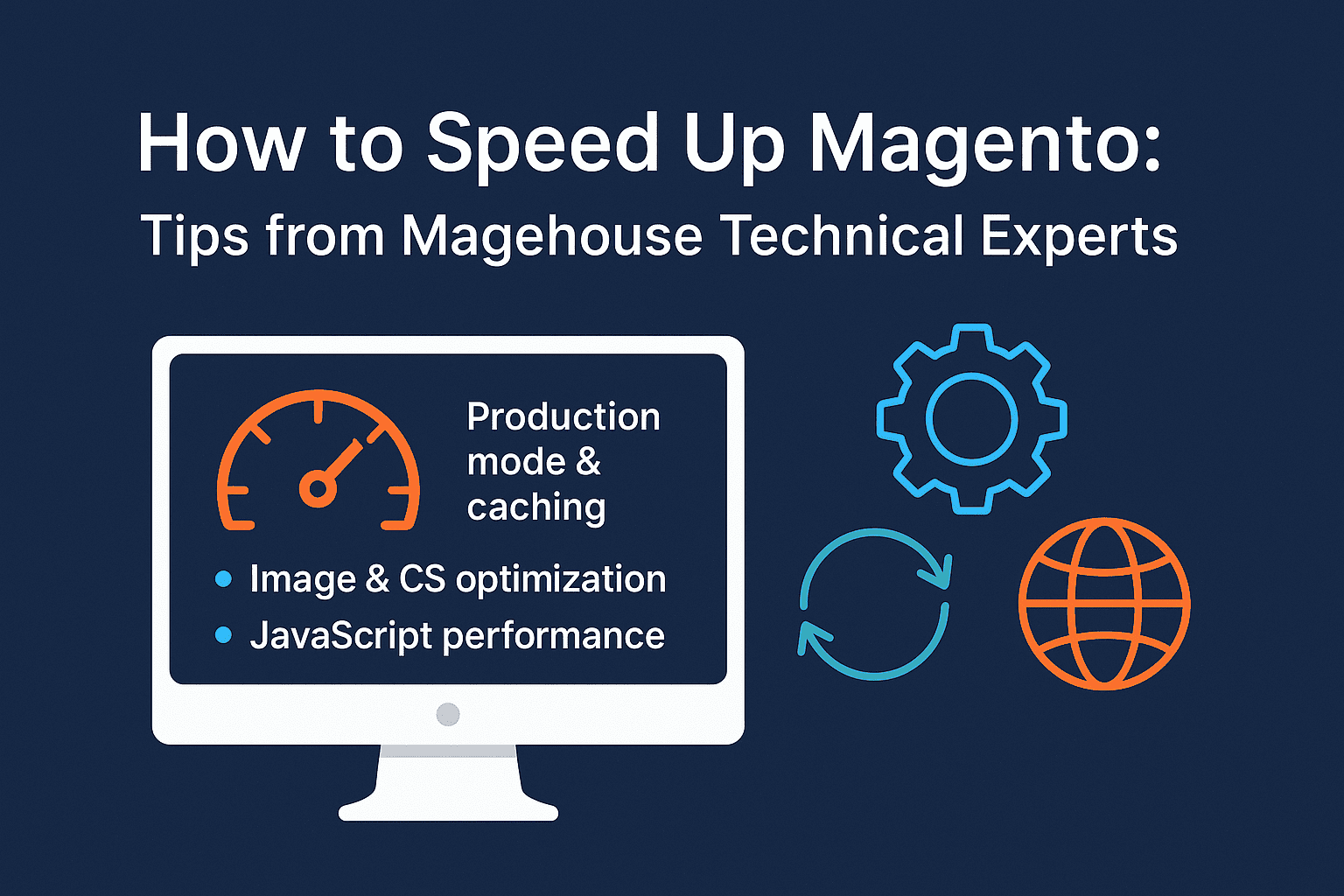How to Prepare Your Magento Store for Peak Sales Season
Practical steps for business owners and developers
The busiest shopping periods – Black Friday, Christmas, seasonal sales – can make or break your annual revenue. For Magento stores, peak season is not just about offering discounts, it’s about surviving heavy traffic without breaking.
Here’s a comprehensive preparation plan that covers both sides: what you need to do as a store owner, and what your developer should handle.
1. Audit Current Performance
For Store Owners
- Run your site through tools like Google PageSpeed Insights and GTmetrix – keep screenshots for comparison.
- Note pages that feel slow, especially checkout and top-selling product pages.
- Identify your highest revenue categories – they’ll need the most attention.
For Developers
- Perform a server and application audit:
- Check PHP version (should be 8.x).
- Run
bin/magento deploy:mode:show– must be production. - Measure TTFB (Time to First Byte) with tools like WebPageTest.
- Review slow database queries (
pt-query-digestor Performance Schema). - Audit Core Web Vitals via real-user monitoring (CrUX, GA4).
2. Strengthen Hosting and Infrastructure
For Store Owners
- Ask your hosting provider if they offer burst scaling for traffic spikes.
- Ensure your hosting has DDoS protection and SSL in place.
- If your store serves multiple countries, confirm a CDN is in use.
For Developers
- Upgrade PHP-FPM settings (
pm.max_children) to match expected load. - Ensure OPcache is enabled and pre-warmed after deployment.
- Set up or tune Redis for cache/session storage.
- Use Varnish as Full Page Cache; check
X-Magento-Cache-Debug: HITfor cacheable pages. - CDN configuration: long TTL for static assets, hashed filenames.
3. Optimise for Speed
For Store Owners
- Reduce heavy image usage on banners unless necessary.
- Avoid uploading oversized product images; stick to pre-optimised formats.
- Minimise third-party widgets and pop-ups during the peak period.
For Developers
- Convert hero and product images to WebP/AVIF; preload the Largest Contentful Paint (LCP) image.
- Inline critical CSS for above-the-fold content; load the rest async.
defernon-essential JavaScript; remove unused libraries.- Reduce CLS (layout shift) by setting width/height attributes on images and placeholders for dynamic content.
- Monitor LCP ≤ 2.5s, INP ≤ 200ms, CLS ≤ 0.1 on key templates.
We wrote about this in more detail in this article: Magento Speed: a Technical Plan That’s Easy to Follow
Secure the Store
For Store Owners
- Enable two-factor authentication for admin users.
- Restrict admin access to known IP addresses if possible.
- Ensure your payment gateway and SSL certificates are valid.
For Developers
- Apply the latest Magento security patches.
- Audit user roles – remove unused admin accounts.
- Set up a Web Application Firewall (WAF).
- Block unwanted bots at server or CDN level.
Checkout Process – Make It Failproof
For Store Owners
- Test the full checkout as a customer: add to cart, apply discount codes, choose shipping, pay.
- Simplify payment options to those most used by your customers.
- Avoid introducing new payment gateways right before the peak season.
For Developers
- Ensure checkout pages bypass cache but remain optimised.
- Reduce JavaScript execution on checkout to avoid input lag.
- Validate tracking scripts – move them after the main content render.
- Test under load (JMeter, k6) to simulate peak checkout traffic.
Inventory, Orders, and Integrations
For Store Owners
- Check stock levels of bestsellers; confirm supplier timelines.
- Ensure your fulfilment team is ready for faster dispatch.
- Review return/refund policy visibility.
For Developers
- Verify ERP, warehouse, and shipping API integrations are stable.
- Monitor cron jobs to avoid backlog (
bin/magento cron:runlogs). - Set alerts for failed orders, payment errors, or API timeouts.
Backups and Recovery Plan
For Store Owners
- Ask your team: if the site goes down, how quickly can we restore it?
- Ensure backups are stored in a separate location from the live server.
For Developers
- Automate daily (or more frequent) backups for code and database.
- Test the restore process before peak season.
- Document rollback steps for deployments.
Marketing and Load Preparation
For Store Owners
- Plan campaigns early; give the dev team dates and expected traffic spikes.
- Avoid unplanned design changes during the busiest days.
For Developers
- Pre-warm caches before campaign launches (crawl top pages).
- Enable full-page caching for all static content.
- Scale server resources temporarily if needed.
Monitor in Real Time
For Store Owners
- Have someone watch live orders, customer chats, and social media mentions.
- Be ready to pause ads if the site struggles.
For Developers
- Monitor server load, PHP processes, Redis latency, and Varnish hit ratio.
- Set alerts for errors in logs and slow queries.
- Use tools like New Relic or Datadog for application performance monitoring.
After the Peak – Review and Improve
For Store Owners
- Analyse sales data: what worked, what didn’t.
- Get customer feedback on the shopping experience.
For Developers
- Review performance logs, error reports, and uptime.
- Note bottlenecks and plan fixes for the next peak.
Final Checklist
Store Owner
- Performance audit done
- Hosting/CDN confirmed
- Checkout tested
- Inventory ready
- Campaign dates locked
Developer
- Production mode enabled
- Redis + Varnish configured
- Images, CSS, JS optimised
- Security patches applied
- Monitoring and alerts active
Peak sales season is a stress test for your Magento store. By splitting responsibilities – owners focusing on business readiness, developers on technical resilience – you’ll have both the speed and stability needed to handle the rush.

